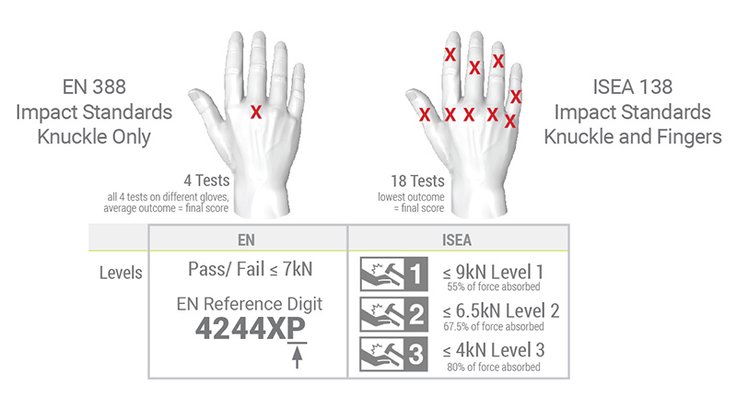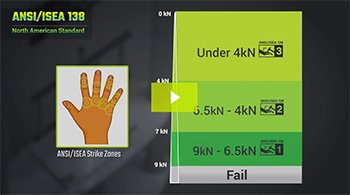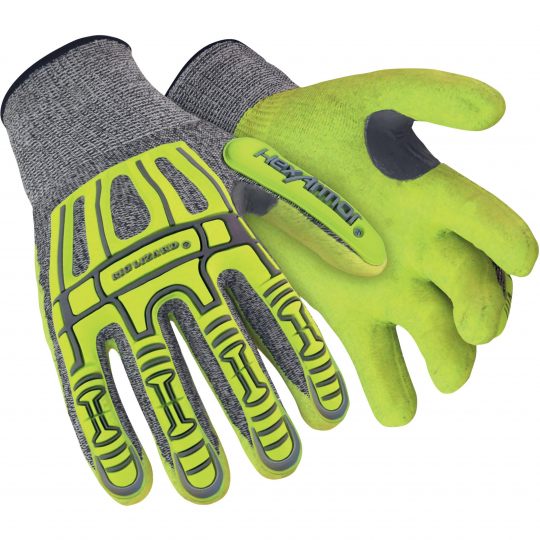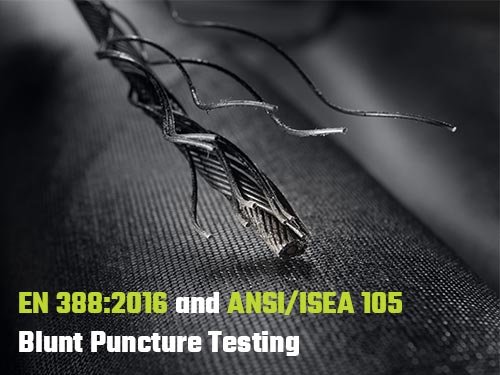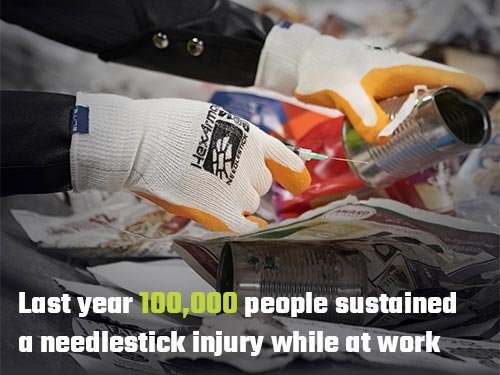There are two global standards when selecting an impact glove: EN 388 and ISEA 138. Though both have similar test methods, each standard has a different scoring and rating system and knowing the difference between them is critical to making better-informed decisions about glove selection and ultimately keeping wearers safe.
The European industrial glove market was the first to add impact testing and ratings to their EN 388 standard in 2016 which follows the existing motorcycle glove test.
Both tests are conducted by dropping a weight of 2.5kg at a height of 20cm at a force of 20kN.


